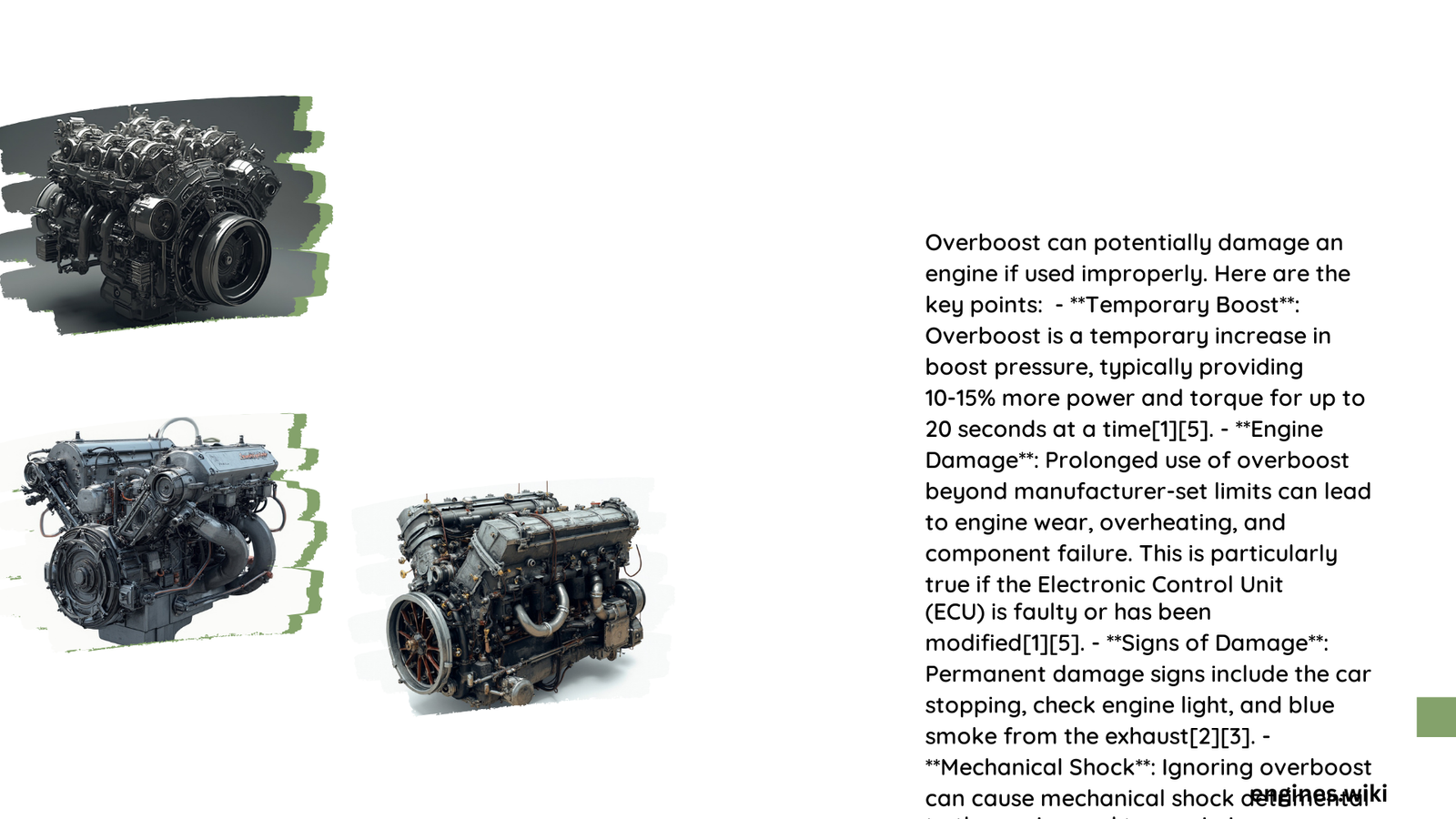Turbocharger overboost represents a critical mechanical phenomenon where excessive boost pressure exceeds manufacturer-recommended limits, potentially causing catastrophic engine damage. When boost pressures surge beyond design specifications, critical engine components like pistons, valves, and gaskets experience extreme thermal and mechanical stress, leading to potential failure, performance degradation, and substantial repair costs. Understanding the intricate dynamics of overboost is crucial for maintaining engine integrity and preventing expensive mechanical complications.
What Causes Turbocharger Overboost?
How Does Boost Pressure Exceed Recommended Limits?
Overboost occurs through multiple mechanical and electronic pathways:
- Wastegate Malfunction: Faulty wastegate prevents proper pressure regulation
- Boost Sensor Failure: Inaccurate pressure readings trigger uncontrolled boost
- Electronic Control Unit (ECU) Errors: Miscalibrated boost management systems
- Aftermarket Modifications: Unauthorized tuning without proper engineering
What Specific Engine Components Suffer from Overboost?

Mechanical Stress Points
| Component | Potential Damage | Risk Level |
|---|---|---|
| Pistons | Thermal cracking | High |
| Cylinder Walls | Excessive wear | Medium |
| Turbocharger Wheel | Mechanical deformation | Very High |
| Connecting Rods | Structural fatigue | High |
Symptoms of Potential Overboost Damage
Critical indicators include:
- Unexpected check engine light activation
- Significant power loss during acceleration
- Unusual knocking sounds from engine compartment
- Increased exhaust temperature
- Irregular combustion patterns
How Much Damage Can Overboost Cause?
Financial and Performance Implications
Overboost damage can result in:
- Repair costs ranging from $1,500 to $5,000
- Complete engine replacement potentially exceeding $10,000
- Permanent reduction in engine performance
- Voided manufacturer warranties
Prevention and Mitigation Strategies
Proactive Maintenance Techniques
- Regular boost pressure system inspections
- Use of high-quality aftermarket monitoring equipment
- Professional ECU tuning and calibration
- Immediate professional diagnosis upon detecting initial symptoms
Technical Diagnostic Approach
Recommended Evaluation Process
- Connect advanced diagnostic scanner
- Check boost pressure readings
- Inspect wastegate and actuator functionality
- Evaluate turbocharger wheel condition
- Analyze ECU logs for anomalies
Expert Recommendations
Professional mechanics universally recommend:
- Never ignore persistent boost pressure warnings
- Maintain conservative boost pressure settings
- Use quality lubricants designed for turbocharged engines
- Perform regular comprehensive engine diagnostics
Conclusion
Understanding overboost requires technical expertise and proactive maintenance. While turbocharger systems offer exceptional performance, they demand precise management to prevent catastrophic engine damage.
